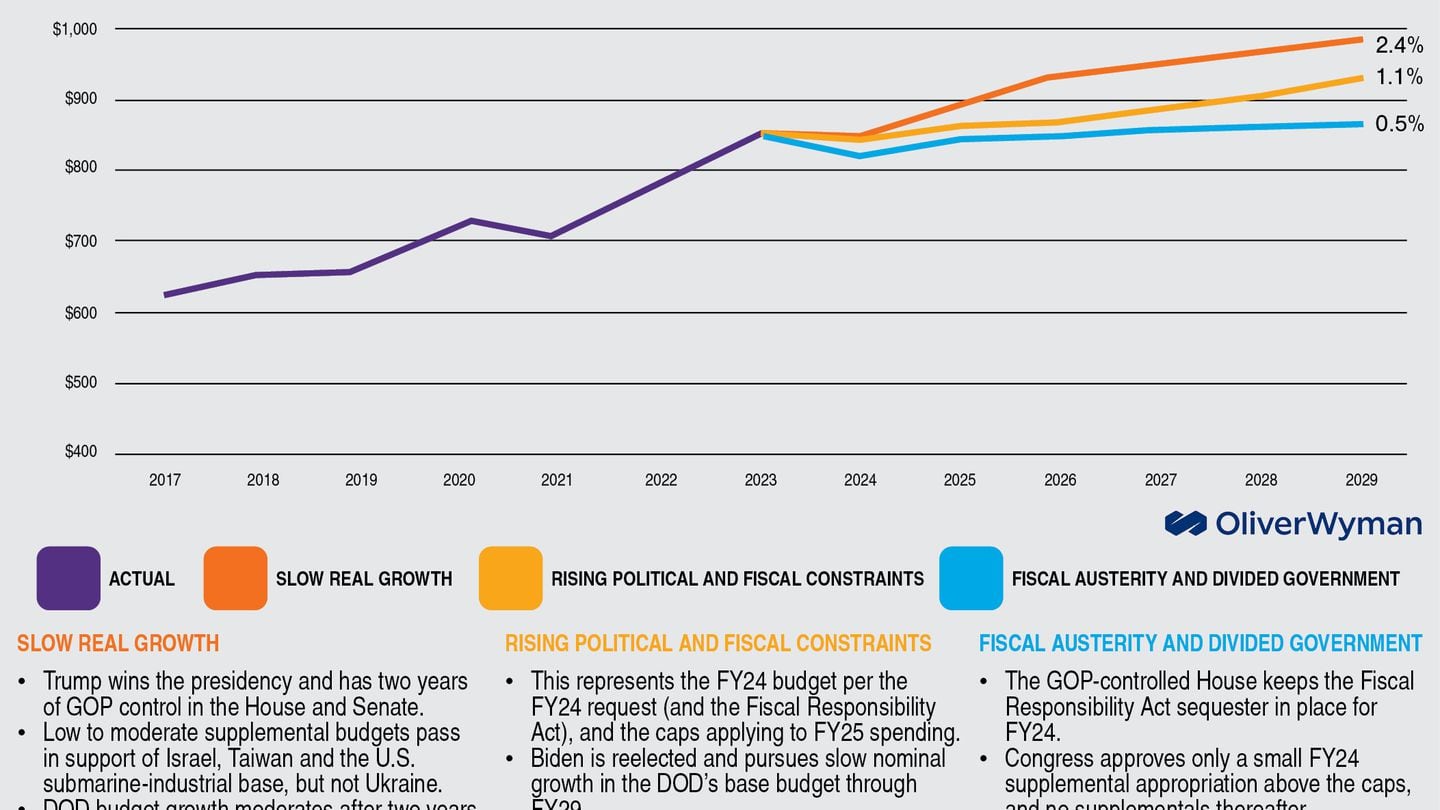To forecast the Pentagon’s fiscal 2025 budget is tricky when Congress is still debating the fiscal 2024 version, which is in progress under a continuing resolution. But with the Biden administration set to unveil its FY25 budget request in the first half of March, the consultancy Oliver Wyman has come up with three scenarios for the Defense Department’s top line through FY29.
These hinge on four related variables:
Who wins the White House? Former President Donald Trump regards increased defense spending as one of his signature achievements. If reelected, he might look to reprise that record. He and President Joe Biden also could take very different approaches to Ukraine financial assistance via supplemental budgets.
Who controls Congress? If one party controls all three branches of government, it will have an easier time enacting its fiscal plans. Given the number of Democratic seats at stake this November, Senate control is likely to shift to Republicans in 2025-2026. The race for control of the House is a toss-up. A divided Congress is a recipe for continued dysfunction over the budget process.
Will there be fiscal constraints? The Fiscal Responsibility Act set caps on all discretionary spending in FY24 and FY25. The law could sequester the FY24 budget to 99% of FY23 enacted levels unless Congress acts by April 30. This would leave the DOD about 4.2% below the FY24 budget request. For FY25 and beyond, Congress could limit federal spending to cope with historic budget deficits and national debt.
What about supplemental budgets? In October, the White House requested $105.1 billion in supplemental funds — which are not constrained by the Fiscal Responsibility Act — to support Ukraine, Israel, U.S. submarine programs and other efforts. House Republicans are divided over Ukraine funding. Whether Congress uses supplementals to aid Ukraine and to skirt caps are critical variables.
There are some outliers who advocate spending outside these scenarios. For example, Sen. Roger Wicker, R-Miss., has called for defense spending equal to 5% of gross domestic product. On the other hand, Reps. Barbara Lee, D-Calif., and Mark Pocan, D-Wis., in February 2023 called for the FY24 defense budget to be $100 billion below the FY22 budget. But neither of these extremes has enough support.

Doug Berenson is a partner in the aerospace and defense practice at the consultancy Oliver Wyman.
from Defense News https://ift.tt/74k8gMf
via IFTTT

Post a Comment